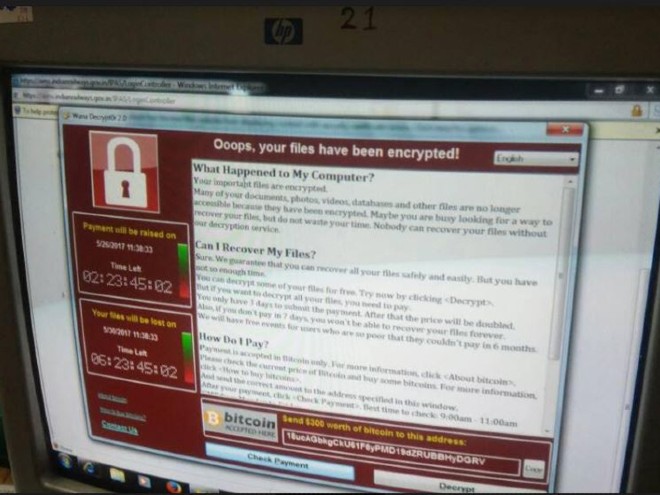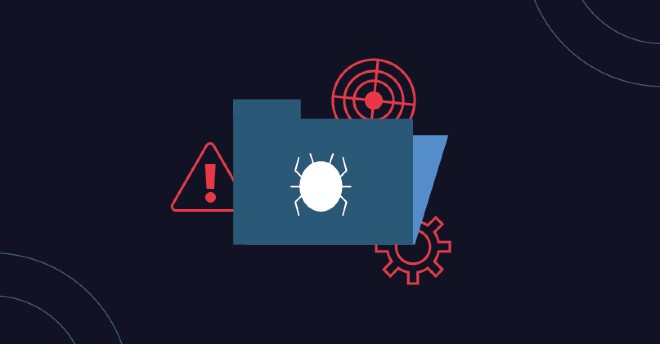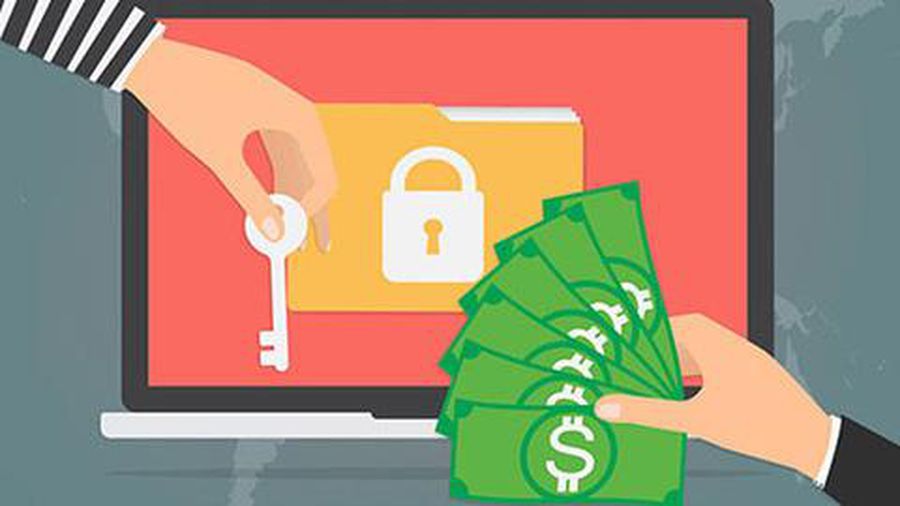What to do when you know your computer is infected with ransomware
Anyone is at risk of being attacked by hackers. Even the most careful, most security-conscious people will have moments of neglect or mistakenly click on a link containing malicious code.
According to recent research, the number of ransomware attacks has doubled in 2020. Even in 2021, an estimated ransomware attack occurs every 11 seconds.
No one wants their computer infected with ransomware. However, if you accidentally get infected, what should you do? Here are 5 important things you need to do as soon as you are infected with ransomware to minimize the damage to yourself and your family, work or business.
1. Isolate and shut down infected computers máy
The first thing you need to do is quickly isolate the ransomware infected computer from the home, work or business network and power it off. The faster you act, the lower the risk of ransomware infiltrating your organization's databases and the smaller the number of infected computers.
Usually, agencies and businesses will disconnect from the internet and shut down their entire systems when infected with ransomware because this is the most effective method of preventing ransomware from spreading.

2. Implement contingency plans to ensure work progress
When infected with ransomware your work and work, business will come to a halt without an alternative. Therefore, you and the agencies and businesses need to have backup plans ready to be able to ensure that all jobs, business plans and customer service are not affected.
3. Report to law enforcement agencies
Many agencies and businesses are not willing to report cyber attacks or ransomware to law enforcement for fear of exposing sensitive data. However, this reporting is necessary and it also helps law enforcement quickly find the culprit, preventing further attacks.
In some countries, law enforcement allows businesses to report data attacks within 72 hours.

4. Restore the system from backups
The best data protection measure is backup. However, for global businesses, data recovery can be time-consuming due to the large volume of data that needs to be restored.
This shows the need for the first action because the earlier a ransomware infection is detected and prevented, the fewer computers and data need to be restored.
5. Fix, patch and monitor và
In this final step, businesses need to overcome the consequences of ransomware. Then, agencies and businesses need to coordinate with parties to find out the security holes that hackers exploit. If the vulnerability is not patched, agencies and businesses will face the risk of continuous ransomware attacks even if they have fixed or paid data ransom.
Agencies and businesses need to strengthen supervision of activities in their networks. Other security measures also need to be applied and in addition to raising the security consciousness of employees.
You should read it
- How to remove Moba ransomware from the operating system
- List of the 3 most dangerous and scary Ransomware viruses
- Ransomware 'Your Windows has been banned' extorting users with a face value of 50 USD Bitcoin
- [Infographic] 7 effective ways to protect businesses from Ransomware
- How to delete ransomware creates a .boot file
- Kaseya suffered a ransomware attack, affecting a series of other technology companies
- How to delete ransomware creates .bora file extension
- Ransomware can encrypt cloud data
May be interested
- Protect your computer right before the return of two extremely dangerous ransomware
 over the past few months, we've witnessed a series of scary ransomware attacks including wannacry, petya and leakerlocker and now we have to protect our computers against the return of two dangerous ransomware. other.
over the past few months, we've witnessed a series of scary ransomware attacks including wannacry, petya and leakerlocker and now we have to protect our computers against the return of two dangerous ransomware. other. - What is BBBW Malware? How to remove and restore data?
 your device has been infected with the bbbw ransomware and the cybercriminals have encrypted your files. so how does this ransomware variant work? is it worth paying the ransom to decrypt your files?
your device has been infected with the bbbw ransomware and the cybercriminals have encrypted your files. so how does this ransomware variant work? is it worth paying the ransom to decrypt your files? - List of the 3 most dangerous and scary Ransomware viruses
 while security solutions to protect us from threats, hackers are increasingly improving, while malicious programs (malware) are also becoming more and more 'cunning'. and one of the recent threats is how to extort money through ransomware.
while security solutions to protect us from threats, hackers are increasingly improving, while malicious programs (malware) are also becoming more and more 'cunning'. and one of the recent threats is how to extort money through ransomware. - Warning: Quantum Ransomware is being rapidly deployed in lightning attacks
 ransomware (ransomware) is probably not a new concept for most computer users. however, quantum ransomware is a term not everyone has heard of.
ransomware (ransomware) is probably not a new concept for most computer users. however, quantum ransomware is a term not everyone has heard of. - There is a tool to decrypt the ransomware that specializes in attacking businesses
 this new ransomware is still in development.
this new ransomware is still in development. - The number of users infected with ransomware increased 7 times
 according to the latest warning from kaspersky lab security firm, the number of users attacked by ransomware increased 7 times compared to 2019.
according to the latest warning from kaspersky lab security firm, the number of users attacked by ransomware increased 7 times compared to 2019. - How to use Acronis Ransomware Protection against ransomware
 acronis ransomware protection is an anti-ransomware software on your computer that protects your computer against malicious attacks and data backup features.
acronis ransomware protection is an anti-ransomware software on your computer that protects your computer against malicious attacks and data backup features. - Can a VPN Protect You From Ransomware?
 ransomware is a worrisome online threat. if it's installed on your computer, you not only risk paying a ransom to get your files back, but you also potentially won't get them back even after paying.
ransomware is a worrisome online threat. if it's installed on your computer, you not only risk paying a ransom to get your files back, but you also potentially won't get them back even after paying. - Ransomware can encrypt cloud data
 ransomware is as small as a grain of sand, they are everywhere around us. and they can encrypt hard drive attacks but also attack other system drives, and cloud drives don't get out of sight.
ransomware is as small as a grain of sand, they are everywhere around us. and they can encrypt hard drive attacks but also attack other system drives, and cloud drives don't get out of sight. - Ako ransomware is raging all over the world, what do you know about this ransomware?
 ako was first discovered when a victim posted information about an infection he encountered on the bleeping computer security forum.
ako was first discovered when a victim posted information about an infection he encountered on the bleeping computer security forum.










 The security risks of RDP
The security risks of RDP 4 recommendations to limit risks from ransomware
4 recommendations to limit risks from ransomware How to Download and Install Bitdefender on Windows
How to Download and Install Bitdefender on Windows Exploit code released puts Windows 10 20H2 and Windows Server 20H2 at risk
Exploit code released puts Windows 10 20H2 and Windows Server 20H2 at risk Google Chrome uses Windows 10's new security feature to combat exploits
Google Chrome uses Windows 10's new security feature to combat exploits Windows users need to update this software immediately
Windows users need to update this software immediately